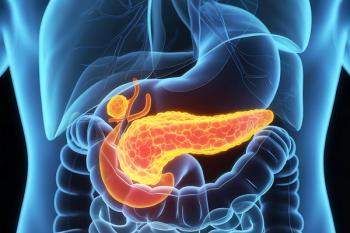
- Special Issues-05-01-2007
- Volume 0
- Issue 0
Corporate Retrospective 2007: Shimadzu
Shimadzu congratulates LCGC on their 25th anniversary and we offer sincere wishes for many more years of service to the LC–GC community.
Shimadzu congratulates LCGC on their 25th anniversary and we offer sincere wishes for many more years of service to the LC–GC community.
In many respects, the advent of LCGC mirrors the development of Shimadzu's HPLC product line. While we have more than 30 years of HPLC history, our LC-6A series, introduced in 1984, was one of the world's first models based on a modular design. This design is now widely accepted as the industry standard. A strong relationship with LCGC has enabled Shimadzu to become a leader in the HPLC field.
Over the last few years, we have observed two distinct trends. First, users want systems that meet their specific analytical needs. They want to modify their "cookie-cutter" systems, or design new ones. A high-performance modular system eases these demands by offering users the flexibility to perform many analytical tasks with one instrument, including as a front end for high-sensitivity LC–MS-MS.
Secondly, the demands for faster analysis times will continue to grow. At Shimadzu, we believe the goal of fast LC is increased sample throughput while maintaining data quality, and our engineers will continue to partner with customers to ensure there are never any compromises in the quality of the data.
Our GC history extends back to 1956. Over the decades, we have continued to meet users' demands by providing instruments focused on speed, power, and precision. When LC Magazine brought GC into the fold, it created a medium for GC users and manufacturers to share stories and applications, helping garner attention for Shimadzu and our systems. While a mature market, the GC is an indispensable tool and we believe users will continue to demand high-quality data, innovative technology and, as in LC, custom-made systems for specific applications.
For over 130 years, Shimadzu has approached product development with an adventurous spirit and with customers uppermost in mind. This approach continues and we look forward to partnering with customers, and LCGC, to develop and promote instruments that meet the needs of researchers and scientists around the globe.
Congratulations again to LCGC!
Akira Nakamoto
Akira Nakamoto
Managing Director, General Manager,
Analytical & Measuring Instruments Division
Shimadzu Corporation
Articles in this issue
over 18 years ago
Corporate Retrospective 2007: ACD Labsover 18 years ago
Corporate Retrospective 2007: CDS Analyticalover 18 years ago
Corporate Retrospective 2007: ESAover 18 years ago
Corporate Retrospective 2007: Peak Scientificover 18 years ago
Looking back at 25 Years of LCGCover 18 years ago
Corporate Retrospective 2007: Tosohover 18 years ago
Corporate Retrospective 2007: Milliporeover 18 years ago
Corporate Retrospective 2007: Brukerover 18 years ago
Corporate Retrospective 2007: PickeringNewsletter
Join the global community of analytical scientists who trust LCGC for insights on the latest techniques, trends, and expert solutions in chromatography.





